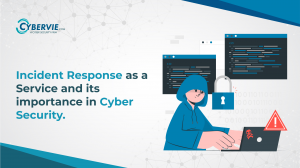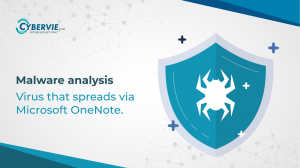Spoofing relies on a hacker’s ability to pass themselves off as someone or something else. Some attackers disguise their communications such as emails or phone calls so that they appear to be coming from a trusted person or organization. With these types of spoofing attacks, hackers try to trick you into exposing sensitive personal information.
It works in a very peculiar but unidentifiable method and thus deceiving the victim of its actual intention.
Difference between Spoofing & Phishing
There are many people who use Spoofing and Phishing interchangeably, there is a thin line of difference between the two.
The difference between spoofing and phishing is that while spoofing uses someone else’s identity, phishing attacks try to access sensitive information. Typical phishing scams involve luring victims with bait — like spoofed emails — and tricking them into providing personal data that can be used for identity theft.
Spoofing attacks make it appear as though the hacker’s communications can be trusted because they mimic the look and feel of trusted sources. Many phishers use spoofing to trick their victims into believing their email is legitimate. This kind of manipulative social engineering is how phishing scams convince you to disclose personal information.
Types of Spoofing:
- Website/ URL Spoofing– It involves making a malicious website look like a legitimate one. The website will have everything similar to the authentic website you visit but lacks on the security front and while someone logs in all the credential will be sent to the Attacker or drop malware onto your computer (a drive-by download). A spoofed website will generally be used in conjunction with an email spoof, in which the email will link to the website.
- Caller ID Spoofing– happens when scammers fool your caller ID by making the call appear to be coming from somewhere it isn’t. Scammers have learned that you’re more likely to answer the phone if the caller ID shows an area code the same or near your own. Although a software called Malawarebytes available for both Android and iOS block such spam calls.
- Email Spoofing– One of the most prominent form of spoofing prevalent today. It is the act of sending emails with false sender addresses, usually as part of a phishing attack designed to steal your information, infect your computer with malware or just ask for money. Typical payloads for malicious emails include ransomware, cryptojackers, Trojans (like Emotet), or malware that enslaves your computer in a botnet (see DDoS).
- Text Message/SMS Spoofing– It involves sending a text message with someone else’s phone number or sender ID. There are many companies that use this technique solely for marketing purpose and for the convenience of the customers. Scammers do the same thing—hide their true identity behind an alphanumeric sender ID, often posing as a legitimate company or organization. The spoofed texts will often include links to SMS phishing sites (smishing) or malware downloads.
- Man-in-the-Middle(MitM) attack– One of the most famous attacks used to obtain credentials from open networks. It is called so as cybercriminals are able to intercept web traffic between two parties. The spoof comes into play when the criminals alter the communication between the parties to reroute funds or solicit sensitive personal information like credit card numbers or logins.
- IP Spoofing– It is used when someone wants to hide or disguise the location from which they’re sending or requesting data online. Usually achieved through VPN’s, Proxies, or using TOR. IP address spoofing is used in distributed denial of service attacks (DDoS) to prevent malicious traffic from being filtered out and to hide the attacker’s location.
Although all of this seems scary, there are methods to detect that you are being targeted as a victim of spoofing. These are as follows:
- Doublecheck the sender’s address. As mentioned, scammers will register fake domains that look very similar to legitimate ones.
- Use a password manager. A password manager like 1Password will autofill your login credentials for any legitimate website you save in your password vault. However, if you navigate to a spoofed website your password manager will not recognize the site and not fill in the username and password fields for you, a good sign you’re being spoofed.
- Google the contents of the email. A quick search might be able to show you if a known phishing email is making its way around the web.
- Embedded links have unusual URLs. You can check URLs before clicking by hovering over them with your cursor.
- No lock symbol or green bar. All secure, reputable websites need to have an SSL certificate, which means a third-party certification authority has verified that the web address actually belongs to the organization being verified.
- The website is not using file encryption. HTTP, or Hypertext Transfer Protocol, is as old as the Internet and it refers to the rules used when sharing files across the web. Legitimate websites will almost always use HTTPS, the encrypted version of HTTP, when transferring data back and forth.
- Turn on your spam filter. This will stop the majority of spoofed emails from ever making it to your inbox.
For more blogs like this please go to our blog page








